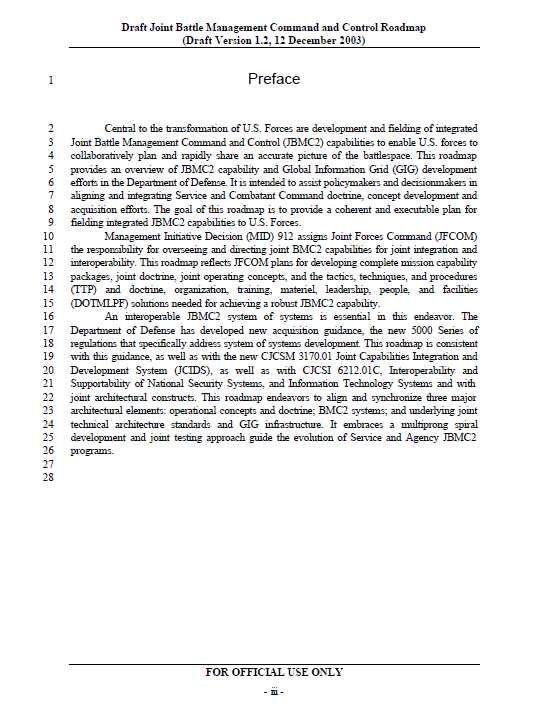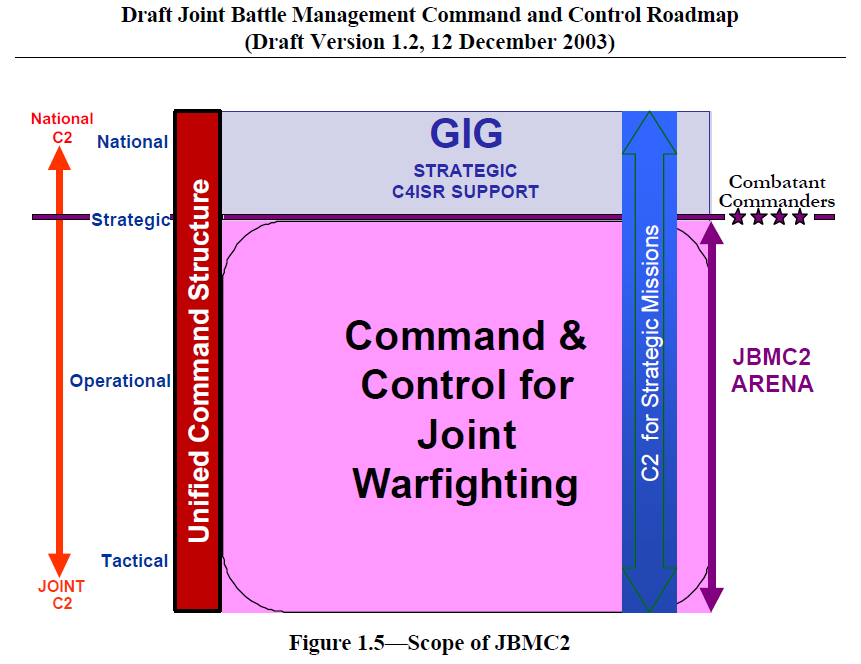 Draft Joint Battle Management Command and Control Roadmap
Draft Joint Battle Management Command and Control Roadmap
- Draft Version 1.2
- 156 pages
- For Official Use Only
- December 12, 2003
Central to the transformation of U.S. Forces are development and fielding of integrated Joint Battle Management Command and Control (JBMC2) capabilities to enable U.S. forces to collaboratively plan and rapidly share an accurate picture of the battlespace. This roadmap provides an overview of JBMC2 capability and Global Information Grid (GIG) development efforts in the Department of Defense. It is intended to assist policymakers and decisionmakers in aligning and integrating Service and Combatant Command doctrine, concept development and acquisition efforts. The goal of this roadmap is to provide a coherent and executable plan for fielding integrated JBMC2 capabilities to U.S. Forces.
Management Initiative Decision (MID) 912 assigns Joint Forces Command (JFCOM) the responsibility for overseeing and directing joint BMC2 capabilities for joint integration and interoperability. This roadmap reflects JFCOM plans for developing complete mission capability packages, joint doctrine, joint operating concepts, and the tactics, techniques, and procedures (TTP) and doctrine, organization, training, materiel, leadership, people, and facilities (DOTMLPF) solutions needed for achieving a robust JBMC2 capability.
An interoperable JBMC2 system of systems is essential in this endeavor. The Department of Defense has developed new acquisition guidance, the new 5000 Series of regulations that specifically address system of systems development. This roadmap is consistent with this guidance, as well as with the new CJCSM 3170.01 Joint Capabilities Integration and Development System (JCIDS), as well as with CJCSI 6212.01C, Interoperability and Supportability of National Security Systems, and Information Technology Systems and with joint architectural constructs. This roadmap endeavors to align and synchronize three major architectural elements: operational concepts and doctrine; BMC2 systems; and underlying joint technical architecture standards and GIG infrastructure. It embraces a multiprong spiral development and joint testing approach guide the evolution of Service and Agency JBMC2 programs.
…

